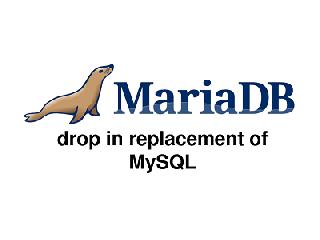mysql中grant all privileges on赋给用户远程权限方式
目录
- mysql grant all privileges on赋给用户远程权限
- mysql授权语句说明grant all privileges、创建用户、删除用户
- 总结
mysql grant all privileges on赋给用户远程权限
mysql中grant all privileges on赋给用户远程权限
- 改表法。
当你的帐号不允许从远程登陆,只能在localhost连接时。这个时候只要在mysql服务器上,更改 mysql 数据库里的 user 表里的 host 项,从localhost"改成%即可实现用户远程登录
在安装mysql的机器上运行:
1. mysql -u root -p
2. select host,user from user where user='root';
3. update user set host = '%' where user='root' and host='localhost';
4. select host, user from user where user='root';
- 授权法
[root@aaa-server ~]# mysql -u root -p MariaDB [(none)]> grant all privileges on *.* to root@"%" identified by "123" with grant option; Query OK, 0 rows affected (0.00 sec) MariaDB [(none)]> flush privileges; Query OK, 0 rows affected (0.01 sec) MariaDB [(none)]> flush privileges; Query OK, 0 rows affected (0.00 sec) MariaDB [(none)]> exit Bye
- 授权法。
例如,你想user使用mypwd从任何主机连接到mysql服务器的话。
在安装mysql的机器上运行:
1. GRANT ALL PRIVILEGES ON *.* TO "user"@"%" IDENTIFIED BY "mypwd" WITH
GRANT OPTION;
2.FLUSH PRIVILEGES;
模板:
grant all privileges on 库名.表名 to "用户名"@"IP地址" identified by "密码" with grant option;
flush privileges;
- 如果你想允许用户user从ip为192.168.1.4的主机连接到mysql服务器,并使用mypwd作为密码
在安装mysql的机器上运行:
GRANT ALL PRIVILEGES ON *.* TO "user"@"192.168.1.3" IDENTIFIED BY "mypwd" WITH GRANT OPTION; FLUSH PRIVILEGES;
注意授权后必须FLUSH PRIVILEGES;否则无法立即生效。
高版本数据库不能按照grant all privileges on *.* to "root"@"%" identified by "xxxx";去修改用户权限
mysql> SELECT @@VERSION; +-----------+ | @@VERSION | +-----------+ | 8.0.14 | +-----------+ 1 row in set (0.00 sec)
高版本修改用户权限方法:
# 先创建远程用户,再授权 mysql> create user "root"@"%" identified by "password"; Query OK, 0 rows affected (0.03 sec) mysql> grant all privileges on *.* to "root"@"%" with grant option; Query OK, 0 rows affected (0.01 sec) mysql> flush privileges; Query OK, 0 rows affected (0.00 sec)
再次查看发现有了root %
mysql> select User,Host from user; +------------------+-----------+ | User | Host | +------------------+-----------+ | root | % | | mysql.infoschema | localhost | | mysql.session | localhost | | mysql.sys | localhost | | root | localhost | +------------------+-----------+ 5 rows in set (0.00 sec) ————————————————
mysql授权语句说明grant all privileges、创建用户、删除用户
mysql的赋权语句:
grant all privileges on *.* to "root"@"%" identified by "123456" with grant option;
- all privileges ==》 表示所有的权限 ,增删改查权限全部都有了
- *.* ==> 所有的数据库下面所有的表
- root@% ==》 所有数据库下面所有的表,所有的权限,全部都给root用户 % 表示root用户可以在任意机器上面进行连接登录
- identified by '123456' ==》远程登录连接的密码
刷新权限列表:flush privileges
CREATE DATABASE 数据库名; CREATE USER "用户名"@"%" IDENTIFIED BY "密码"; GRANT all privileges ON 数据库名.* to "用户名"@"%" identified by "密码" WITH GRANT OPTION; flush privileges;
创建用户:CREATE USER 'jack'@'localhost' IDENTIFIED BY 'test123';
查看数据库中已经创建的用户:select user,host from user;--user表在数据库自带的、名字为mysql的数据库中
删除用户:delete from user where user = 'jack';
drop user ‘jack"@"%";
drop user 会将该用户的信息全部删掉,而 delete 只会清除user表,其他的比如db表中的信息还是存在。
清除缓存:FLUSH PRIVILEGES
总结
以上为个人经验,希望能给大家一个参考,也希望大家多多支持。

 网公网安备
网公网安备